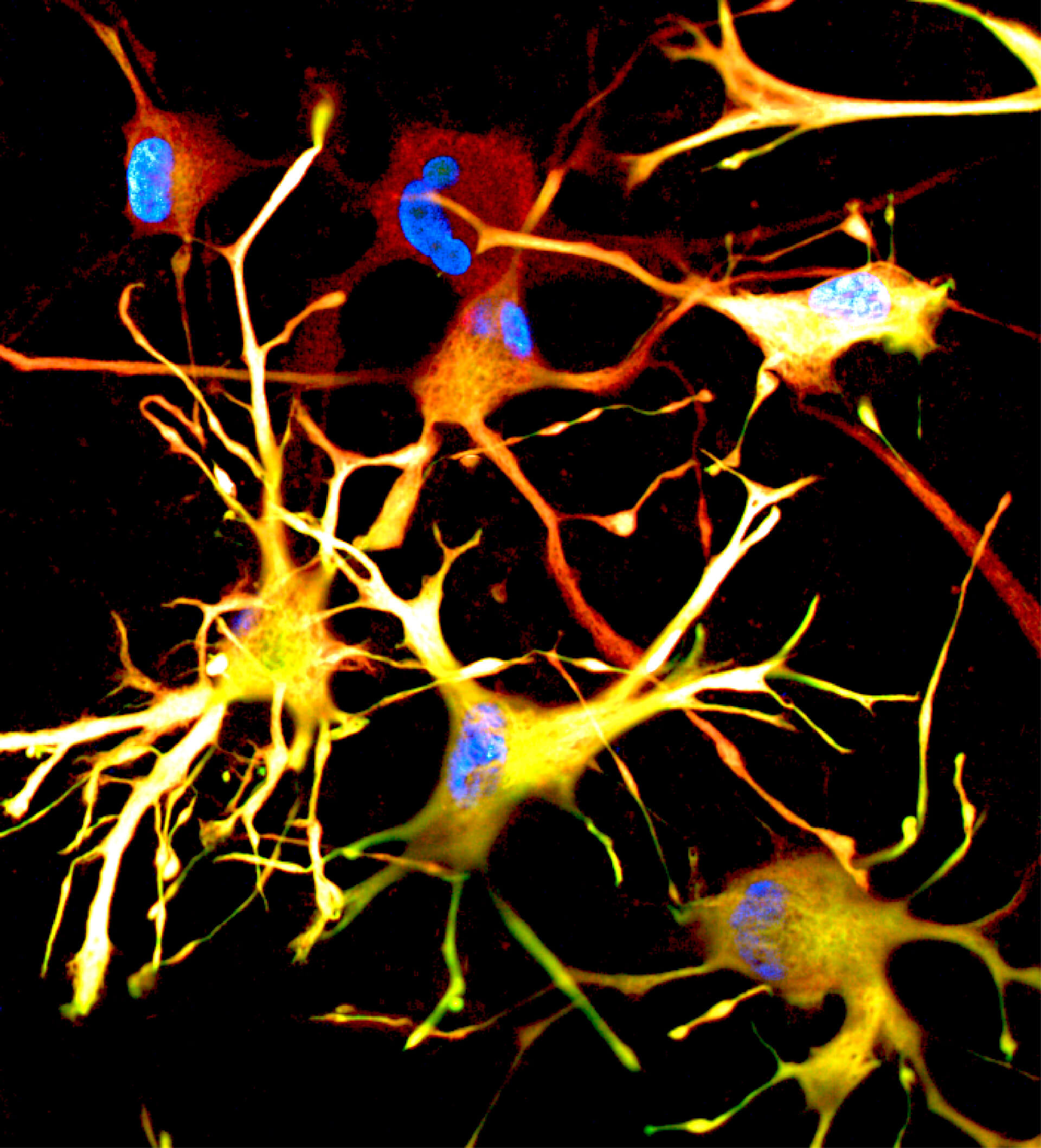This image is part of the IHB InSight series, featuring compelling scientific images of the latest innovative human model systems work done by IHB scientists. For more images, go to our News feed.

´This image shows mature astrocytes of the central nervous system that were derived from human induced pluripotent stem cells (hiPSC). Astrocytes play crucial roles in maintaining neuronal health, regulating lipid metabolism, modulating synaptic activity, and contributing to the blood-brain barrier. These astrocytes here carry the ApoE4/E4 genotype, a genetic variant strongly associated with increased risk for late-onset Alzheimer’s disease. The ApoE4 variant is known to affect astrocyte function, making these cells invaluable for studying the pathophysiology of neurodegenerative diseases. The cells are stained to highlight the astrocyte markers GFAP (green) and Aqp4 (red), revealing a star-shaped, complex morphology. The generation of these hiPSC-derived ApoE4 astrocytes involved CRISPR Cas9 engineering, along with advanced differentiation and maturation protocols. By achieving a more mature state in culture, these astrocytes provide a human-relevant model to explore disease mechanisms and screen potential therapeutic compounds. This model overcomes previous limitations in astrocyte culture systems, enabling more accurate and impactful research in the field of neurodegenerative diseases. The image was created using immunofluorescence staining and high-resolution confocal microscopy. The astrocytes were cultured and imaged by Sybille Seiler of IHB and pRED NRD, with contributions from Tomasz Chelmicki, Daniel Olivieri, Jonas Fleck, Gray Camp and Lynette Foo.